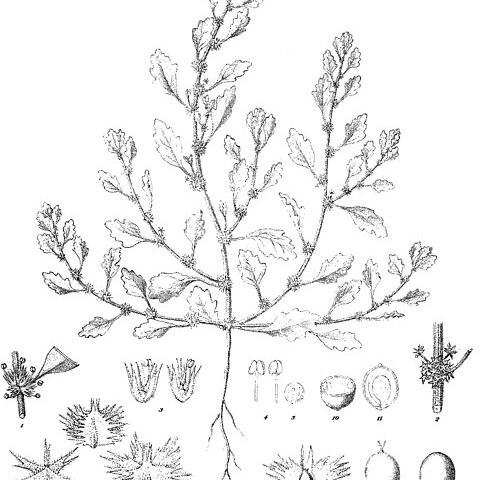Prostrate to ascending annual branching from base, aromatic. Stems pilosulose with both slender and sessile to shortly stipitate gland-tipped hairs. Leaves elliptic to broadly elliptic, entire to coarsely toothed, sparsely puberulous; lamina c. 10 mm long; petiole slender, c. 5 mm long. Flowers in dense axillary clusters. Tepals 5, erect, acuminate. Stamen 0 or 1. Fruiting perianth spherical in outline, c. 2 mm diam., strongly 5-winged, white; tepals free to base, cartilaginous, strongly crested (vertically winged), semiorbicular, rostrate, completely enclosing fruit. Pericarp transparent, adherent. Seed erect, lenticular, c. 0.5 mm diam.
Prostrate herb. Flowers in axillary clusters. Leaves ovate to narrowly ovate, margins lobed, distinctly petiolate. Perianth crested. Weed. Flowers greenish white.

